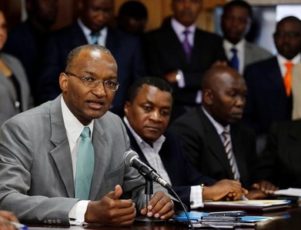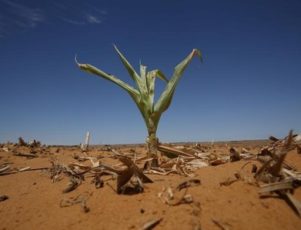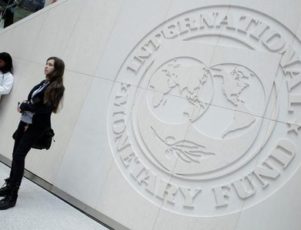NAIROBI (Reuters) – Kenya’s central bank hopes its surprise interest rate cut this week will encourage firms to invest more to spur lagging economic growth, Governor Patrick Njoroge said on Tuesday.
Growth slid to an estimated 4.8 percent last year from 5.8 percent the year before, mainly due to a drought, a prolonged presidential election and a sluggish private sector credit growth.
The finance ministry expects growth to rebound to 5.8 percent this year but pressure to rein in the fiscal deficit could see the government scale back on ambitious infrastructure projects, weighing down economic output.
“It really has to be the private sector that picks that up,” Njoroge said. “We will have to re-balance away from public sector driven to private sector driven economic growth.”
Kenya’s total debt has risen to about 50 percent of GDP, from 42 percent in 2013, as it borrowed locally and abroad to build infrastructure including a new railway line from Nairobi to the port of Mombasa.
The government has pledged to cut the fiscal deficit to 7 percent of GDP at the end of this fiscal year in June, from 8.9 percent in 2016/17, and to less than 5 percent in three years.
Monday’s 50-basis-point cut in the benchmark lending rate to 9.5 percent took much of the market by surprise, with seven of 11 analysts polled by Reuters having forecast no change.
Njoroge said a cap on commercial interest rates could interfere with the aim of the easing stance of boosting credit, as banks lock out borrowers who are deemed too risky.
“We may have a perverse reaction, where indeed, the lowering of the CBR rate leads to a reduction in the level of credit,” he told a news conference. “We will stand ready to take any action to counter if it actually began to manifest itself.”
Private sector credit increased by 2.1 percent in the year to February, well below the central bank’s target of 12-15 percent.
Njoroge said the central bank is pushing commercial banks to be less careless in their lending and correctly asses the risk profiles of borrowers when writing loans.
“The point here is not just having low interest rates … the fundamental issue is to have risk-based pricing of loans,” Njoroge said.
(By Omar Mohammed; Additional reporting by George Obulutsa; Editing by Duncan Miriri and Andrew Heavens)











